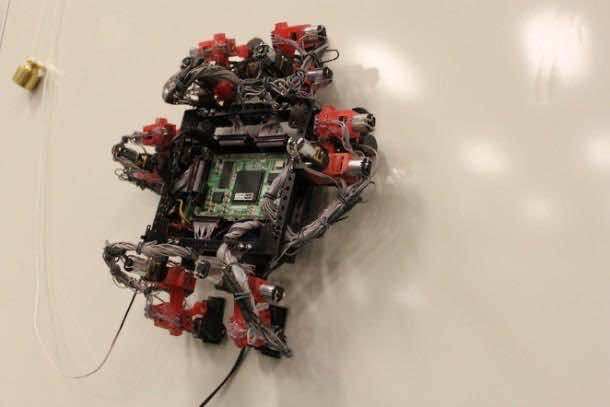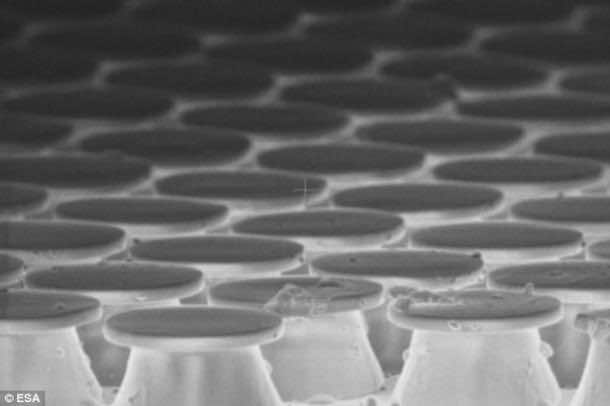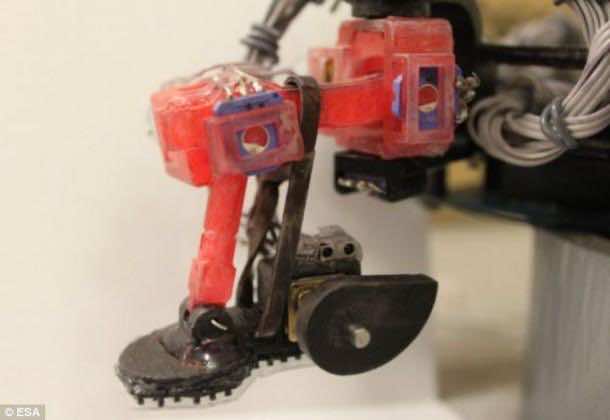Researchers at the Simon Fraser University of Canada have developed a gecko-like robot, named Abigaille, which is capable of climbing any surface, even in space. The robot was tested by the European Space Agency (ESA) and may just be used in space in the near future.
The researchers first built a four legged gecko-bot that weighed 240 grams. This robot had tracks with micro-fiber treads that mimic the toe hair of the gecko. These hairs allow the gecko to climb windows and walls without leaving a trace. The hairs, called setae, are only 100-200 nanometers thick and interact with the surface on a molecular level by creating attraction with molecules via van der Waals force. The microfibers used on the gecko-bot are 100 times thicker due to technical limitations, but are enough to support its weight.
The robot’s dry adhesive was tested by the ESA’s European Space and Technology Center (ESTEC) in the Netherlands. Conditions faced in space including a vacuum and low temperature, but not zero gravity, were replicated to test the adhesive. It passed the tests, meaning dry adhesives can one day be used in space. This is a noticeable achievement as no traditional options could be used before. Sticky tape would collect dust and give off fumes in vacuum environment, making it unsuitable for use in space. Magnets can not stick to composite material and may cause interference with instruments. Velcro needs a mating surface which can come off and become a hazard. This makes dry adhesives the best option for space. Robots can walk on the surface of moving spacecraft and be able to perform maintenance on it without any need for humans to exit the ship.
The newer version of Abigaille has six legs each with four degrees of freedom, making it easy to shift from horizontal to vertical surfaces. This technology may sound sci-fi, but it is very real and may one day even be implemented into our daily lives. Amazing, Isn’t it?






Nice yar